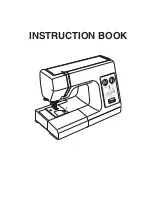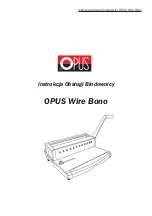
Sewing
23
SE
W
IN
G
B
A
SI
C
S
2
Basic sewing
a
Prepare the appropriate needle and thread for the type
of fabric. (page 19)
If necessary, replace the needle. (page 20)
b
Wind thread onto a bobbin, and then install it into the
machine. (page 12)
c
Thread the upper thread. (page 15)
d
Turn the stitch pattern selection dial to select a stitch.
• For details on the built-in stitch patterns, refer to
“Stitch Chart” on page 33.
• If necessary, change the stitch width or stitch length.
(page 27)
• For details on the LCD viewing, refer to “LCD
Operation” on page 10.
e
Check the symbol for the presser foot shown in the
LCD, and then attach the appropriate presser foot.
Attach zigzag foot “J” in this procedure. (It is on the
machine when purchased.)
• For details on changing the presser foot, refer to
“Replacing the Presser Foot” on page 21.
f
Set the fabric under the presser foot. Hold the fabric
and thread with your left hand, and rotate the
handwheel counterclockwise or press
(Needle
position button) to set the needle in the sewing start
position.
Chapter
2
SEWING BASICS
Sewing
CAUTION
• While the machine is in operation, pay special
attention to the needle location. In addition,
keep your hands away from all moving parts
such as the needle and handwheel, otherwise
injuries may occur.
• Do not pull or push the fabric too hard while
sewing, otherwise injuries may occur or the
needle may break.
• Never use bent needles. Bent needles can
easily break, possibly resulting in injuries.
• Make sure that the needle does not strike
basting pins, otherwise the needle may break
or bend.
Note
• First, perform a trial sewing, using a piece of fabric and
thread that are the same as those used for your project.
CAUTION
• Always use the appropriate presser foot. If the
wrong presser foot is used, the needle may
strike the presser foot and bend or break,
possibly resulting in injury.
Refer to “Stitch Chart” on page 33 for presser
foot recommendations.
















































